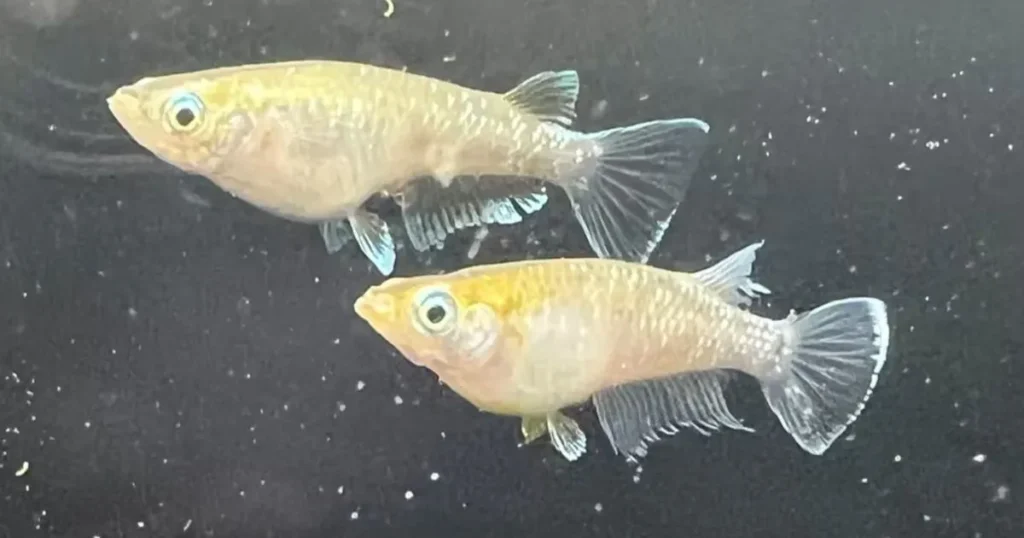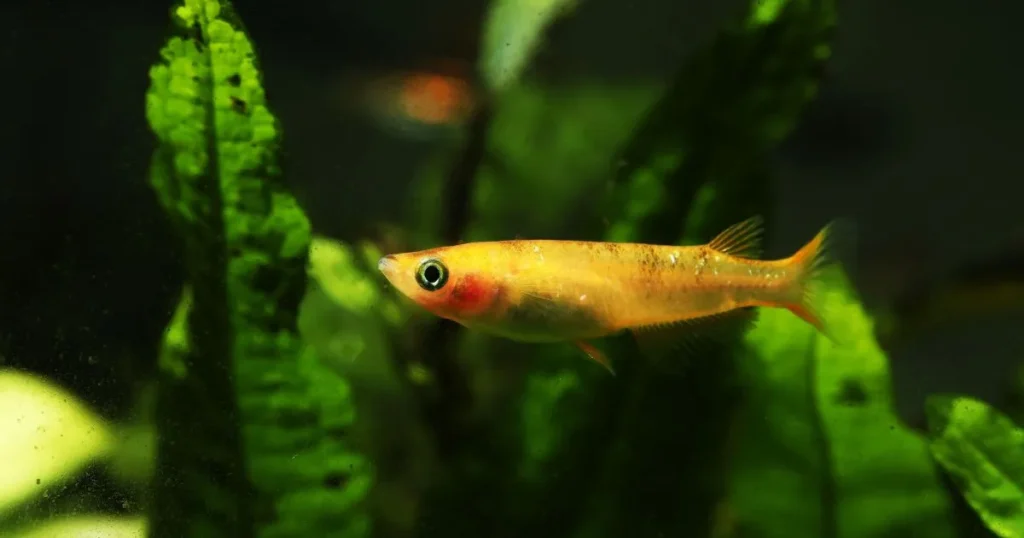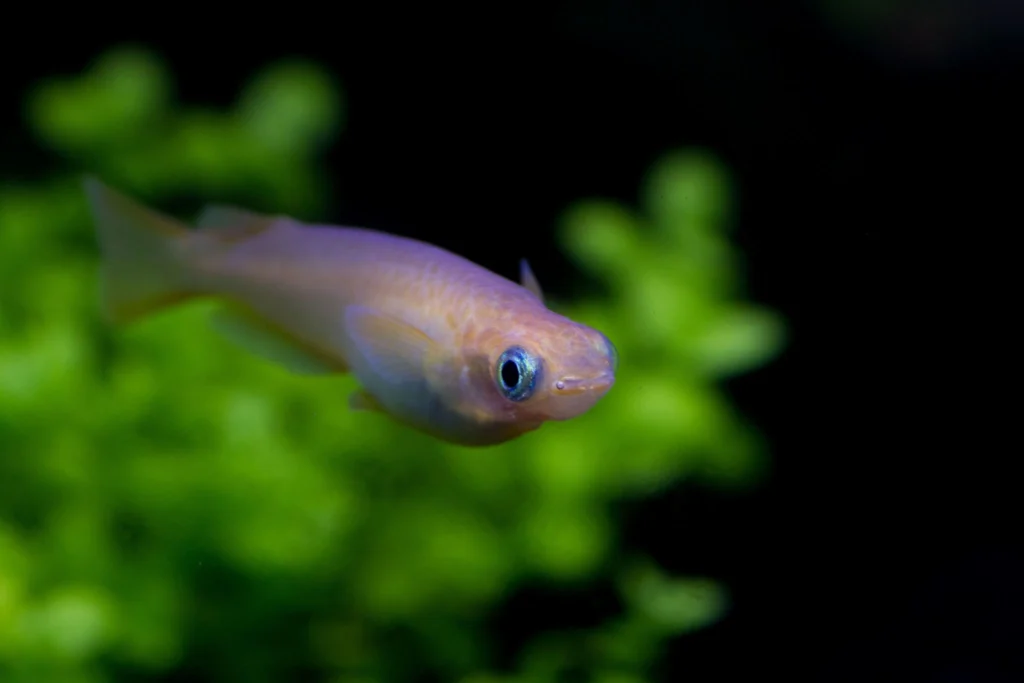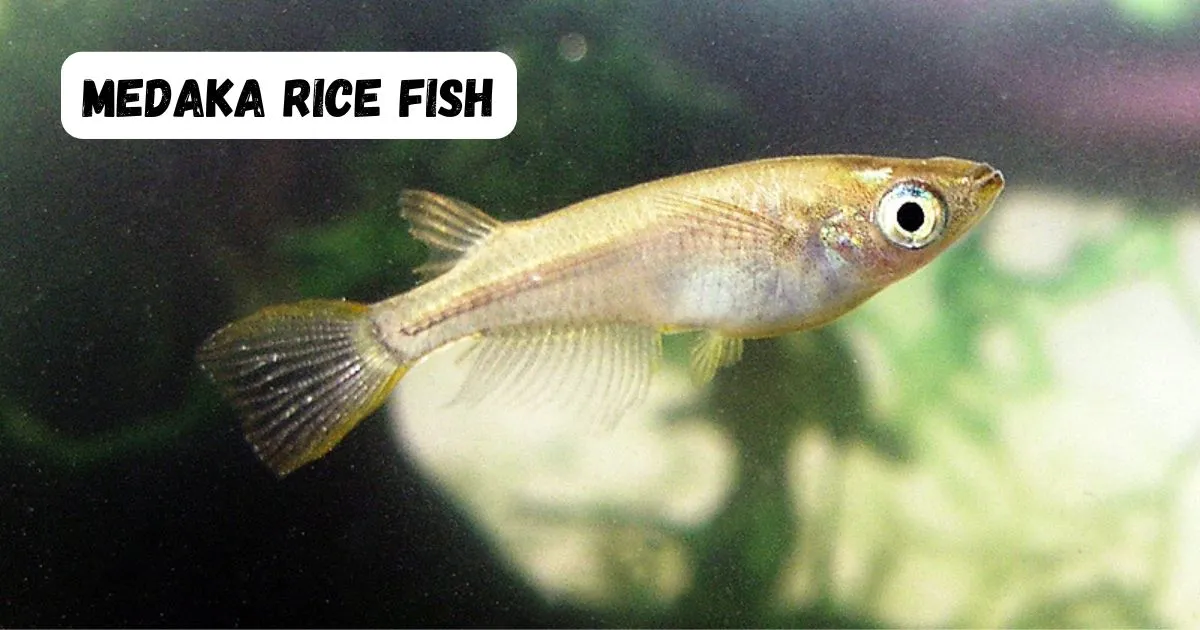Imagine a tiny fish with dazzling colors and a big personality that has fascinated scientists and fish lovers alike. That’s your medaka rice fish, also known by its fancy scientific name, Oryzias latipes. These little aquatic wonders come from Japan and are famous for living happily in rice paddies. But their charm goes beyond their looks; they have an interesting history and play an important role in scientific research, even becoming the first fish to breed in space! Whether you’re a beginner or already a fish newbie, medaka rice fish are a joy to keep.
Biology and Behavior of Medaka Rice Fish

Medaka rice fish might be small, about 1.5 inches long, but their behavior is lively and full of surprises. These fish love to swim around peacefully, usually sticking to their school friends, making them perfect for community tanks. They are calm and rarely show aggression, which means they play well with others. Their natural behavior in the wild includes feeding on tiny insects and plant matter, so don’t be surprised if they get a little curious about their tank’s corners and plants.
Scientists adore medakas because their simple body structure and fast breeding make them perfect for research. From genetics to environmental studies, medaka rice fish have helped researchers understand many biological mysteries.
Comprehensive Aquarium Guide
Setting up a home for your medaka rice fish doesn’t have to be complicated. Start with a tank of around 10 gallons, which gives them enough room to swim without being overwhelming for you to maintain.
Water is their kingdom, so keep it clean and comfy! The ideal water temperature is between 64 and 75 degrees Fahrenheit, which means they like it cool to moderate, not too hot. These fish can adjust to many water conditions but prefer low to medium hardness and a pH level close to neutral (about 7). (pH measures how acidic or basic the water is. 7 is neutral.)
Decorate the tank with live plants like Java moss or hornwort, which offer hiding spaces and egg laying spots. Plus, plants clean the water naturally, making the tank healthier. Use smooth gravel or sand as your tank’s floor to avoid hurting their tiny fins.
Don’t forget a gentle filter that keeps water clear without creating strong currents, as medakas prefer calm waters.
Also Read: How Long Can a Betta Fish Go Without Food? Betta Fish Diet Tips
Nutrition and Feeding Practices
Feeding medaka rice fish is one of the easiest parts of their care. They enjoy a varied diet that mimics their natural eating habits. High quality flake foods work well, but mixing in frozen or live foods like brine shrimp, daphnia, or mosquito larvae will make them happy and healthy.
Feed them small amounts twice a day, offering only what they can finish in 3 to 5 minutes. Overfeeding can dirty the water and make your fish sick, so always keep it moderate!
Breeding Medaka Rice Fish: The Complete Guide

Fancy watching little fish babies grow? Medakas breed readily once they’re comfortable. They love spawning in warmer weather, but can breed year round indoors.
To encourage them, provide plenty of fine leaf plants or spawning mops (bundles of synthetic or natural fibers that mimic aquatic plants for egg laying) where females can deposit eggs. Males are colorful and court females with a dance like swim that’s fun to watch!
After eggs are laid, parents usually don’t eat them, but it’s safer to remove adults if you want to ensure the eggs hatch. Eggs hatch in about 7 to 10 days, revealing tiny fry that you can feed with infusoria or finely crushed fish food.
As the fry grow, gradually introduce them to baby brine shrimp and micro worms for a strong start.
Maintaining Medaka Health
Keeping your medaka rice fish healthy is mostly about preventing problems before they start. Regular water changes of about 25% weekly are a simple but powerful way to keep diseases at bay.
Watch for early signs of sickness like clamped fins, white spots, or sluggish swimming. Medakas are hardy, but stress from poor water quality or overcrowding can make them vulnerable.
If disease strikes, prompt treatment with over the counter aquarium medicines usually helps.
How Do Medaka Rice Fish Adapt to Environmental Changes?

One of the coolest things about medakas is their incredible adaptability. They thrive in a wide range of temperatures and water qualities where many other fish would struggle.
They can survive in freshwater or even slightly salty (brackish) water, making them perfect for quirky aquarium setups. Medakas also adjust to seasonal changes, slowing down in cooler months and picking up activity when it warms.
This adaptability is part of why they’re favorites for scientific studies and aquarium lovers alike.
Lesser Known Varieties and Color Morphs
While many people know medakas for their classic orange or gold colors, there’s a whole rainbow of varieties waiting to brighten your tank. From snowy whites to shimmering silvers and even patterned galactic looking strains, medaka rice fish come in colors that rival any tropical fish.
Collectors treasure rare types like the Youkihi Medaka or the Galaxy Medaka, which add a splash of excitement to your aquarium.
FAQs
What is the ideal tank size for medaka rice fish?
For a small group of medaka rice fish, a tank of about 10 gallons (around 40 liters) is ideal. This size allows enough swimming space while keeping the environment manageable. Smaller tanks, like 6 to 7 gallons, can work for very small groups, but more space is always better for their health and activity.
How often should I feed my medaka rice fish, and what should I give them?
Feed your medaka rice fish small amounts twice a day. They enjoy a varied diet, including high quality flake food, frozen or live foods like brine shrimp and daphnia. Always offer only what they can eat in 3 to 5 minutes to avoid polluting the tank.
Can medaka rice fish breed easily in home aquariums?
Yes! Medakas breed readily, especially if you provide spawning sites like floating plants or spawning mops. Eggs usually hatch within a week to ten days. If you want to raise fry successfully, consider removing the adults after spawning to prevent egg predation.
What water conditions do medaka rice fish prefer?
Medakas thrive in clean, cooler water between 64 to 75°F (18 to 24°C) and tolerate a pH range of 6.5 to 8.5. They prefer low to moderate water hardness and gentle filtration. Regular water changes are important to keep water quality high and fish healthy.
Are medaka rice fish suitable for community tanks, and what are good tank mates?
Yes, medaka rice fish are peaceful and do well in community tanks with other small, non aggressive fish like tetras, guppies, or peaceful snails. Avoid aggressive or large fish that may bully or eat them.
What Are the Best Tank Mates for Medaka?
Because they’re peaceful, medakas get along with other small, calm fish like small tetras, guppies, or snails. Avoid big or aggressive fish that might bully or eat them.
How Do I Know if My Medaka Rice Fish Are Happy?
Look for bright colors, smooth swimming, and active foraging. Happy medakas explore their tank, respond to feeding time, and interact with their friends.
Innovations in Medaka Care
Aquarium devices are getting smarter, and medaka care is no exception. Automated feeders, quality water test kits, and gentle filters make it easier than ever to keep your medakas content.
Additionally, recent research has led to the development of better medicines and nutritional foods specifically designed for small ricefish, such as medakas.
The Future of Medaka in Science and Aquaculture
Medaka rice fish aren’t just pretty faces; they are pioneers. Their ability to reproduce in space and tolerance to environmental stressors make them stars in ongoing biological studies that may help human health and ecology.
Where and How to Purchase Medaka Rice Fish Responsibly
Look for reputable breeders or aquarium stores with clean, healthy fish. Always ask about the fish’s origins and ensure they’re disease free. Buying responsibly helps keep wild medaka populations safe and supports ethical fishkeeping.
Conclusion: Elevate Your Aquarium with Medaka Rice Fish Expertise
Medaka rice fish are tiny treasures that pack a punch of personality, beauty, and curiosity. Their durability, ease of care, and fascinating background make them the perfect choice for anyone looking to add life and charm to their aquarium. With this guide, you’ll be ready to dive into medaka care with confidence and joy, turning your tank into a vibrant underwater world full of color and wonder. Start your medaka adventure today and watch these remarkable fish brighten your days!
